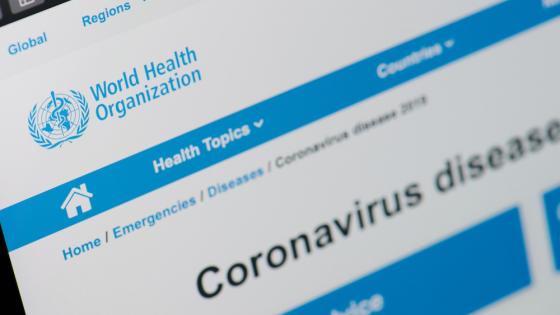Risk communication is key to improving the familiarity with and adherence to preventive measures, in normal times but particularly during health emergencies. Failure to communicate the right message effectively can result in loss of trust, damage to the economy, and loss of lives (McKibbin and Fernando 2020, Wren-Lewis 2020).
As the coronavirus pandemic unfolded in late 2019, the World Health Organization (WHO) was quick to realise the need for a tailored risk communication strategy. The WHO Information Network for Epidemics (or EPI-WIN) was introduced when COVID-19 was declared a public emergency of international concern on 30 January 2020 (WHO 2020). EPI-WIN provides customised information and guidance to specific target groups in addition to fighting the ‘infodemic’, which involved increasing public awareness of preventive measures against COVID-19 through easy to understand behavioural messages using infographics and videos on the WHO website (WHO 2020). EPI-WIN also guides national governments in risk communication and community engagement according to the transmission scenario of each country with the purpose of developing, implementing, and monitoring a communication plan that can help protect public health. Given all the actions undertaken by the WHO to promote public awareness about COVID-19, we investigate public familiarity with the WHO recommended preventive measures, whether familiarity translates into adherence to these measures, and the role that trust in the information plays in this relationship (Varghese et al. 2020).
Countering COVID-19: A European survey on acceptability and commitment to preventive measures
We use individual-level data covering 7,000 respondents, representative of the adult population (aged 18 and above) in seven European countries: Denmark, France, Germany, Italy, Portugal, the Netherlands, and the UK. The online survey was conducted from 2 to 15 April 2020 by the market research company Dynata. The questionnaire was initially developed in English by the authors of the study and was then translated and adapted to country specific contexts by native speakers. In each country, data were collected from 1,000 respondents, representative of the national population in terms of region, age, gender, and education. Representativeness of the sample was achieved by using quotas for the demographic characteristics in each country based on national census statistics. As part of a larger survey, respondents were asked about their familiarity with the preventive measures recommended by WHO, their adherence to these measures, and their trust in the information provided by WHO.
Familiarity with the WHO recommendations
In the wake of the COVID-19 crisis, WHO put forward six basic preventive measures to help contain and mitigate the spread of coronavirus. The recommendations were first released on 10 January 2020 on the WHO website, around 11 weeks prior to the release of our survey (WHO 2020). The recommendations included timely and easy-to-understand measures such as: regularly wash hands with soap for at least 20 seconds; cover nose and mouth while coughing or sneezing; keep a social distance of at least one meter; avoid shaking hands, hugging, or kissing when greeting others; use alcohol-based hand rub; and avoid touching nose, eyes, and mouth. In our survey, respondents were shown the graphic presentation of the six measures used for communication in their country and asked to rate their familiarity with the measures on a scale from “not at all familiar” (1) to “very familiar” (5).
Figure 1 Familiarity with the WHO recommendations, by country (% of population)
On average, 86.3% of the respondents reported being familiar with the WHO recommended measures. Looking at country level variations (Figure 1), we see that the proportion of respondents who reported being moderately or very familiar with the recommendations was highest in Portugal (95.2%) and lowest in the UK (81.4%). Across countries, we find a higher proportion of women (88.4% for women versus 84.0% for men), older (89.5% for 65+ versus 78.1 for 18–24 year olds) and highly educated (87.5% for high/medium versus 83.6% for low levels of education) respondents reporting familiarity with the WHO recommendations. These differences in familiarity by age, gender, and education were statistically significant.
Adherence to WHO recommendations on preventive behaviour
In our study, we asked respondents to rate their adherence to the six preventive measures over the past four weeks using four levels: no; yes, a bit; yes, quite strongly; yes, fully. We consider respondents to adhere to the recommendations if they reported ‘yes, quite strongly’ or ‘yes, fully’ to each of the six recommendations. Overall, we see that 92.1% of the respondents reported to have adopted the WHO recommendations (i.e. 44.2% adhering ‘strongly’ and 47.9% ‘fully’). Avoiding physical contact by not shaking hands, kissing, or hugging when meeting others (93.6%) and keeping a social distance of one meter (91.5%) had an overall higher adherence rate, whereas using an alcohol-based hand rub (67.5%) and avoiding touching nose, eyes, and mouth (62.4%) had the lowest rates of adherence. Comparing countries, Portugal and Italy perform best in adhering to all the WHO recommendations, while France and Denmark perform the worst.
Finally, the proportion reporting adherence is higher among women (94.0% for women versus 90.0% for men) and older respondents (95.1% for 65+ versus 87.5 for 18–24 year olds). Those with high/medium levels of education (51.0%) reported more often adhering fully compared to those with low levels of education (46.5%), as did those with vulnerable family members, such as the elderly and those with additional comorbidities (49.7%), as compared to those who did not indicate having vulnerable family members (45.6%). These differences in adherence among subgroups were statistically significant.
Trust in information from WHO
Furthermore, we asked respondents to rate their level of trust in information from WHO in the context of COVID-19 on a scale “no trust at all” (1) to “trust very much” (5). Respondents reporting a score of four or five are classified as having trust in the information from the WHO, and those with a score of one or two as having no trust in this information. We find that on average 59.8% of the respondents from the countries included in this study trust the information on COVID-19 from WHO, while 15.5% do not trust this information.
Figure 2 shows the proportion of respondents in each country reporting trust or no trust in the information from WHO and the relative ranking among countries in terms of trust. A marked difference in trust is observed between the countries. In particular, we find that trust is highest in Denmark and Portugal and lowest in France. Similarly, Denmark scores the lowest on distrust while France scores the highest followed by Italy, the two countries most impacted by COVID-19.
Figure 2 Trust and distrust in information on COVID-19 from WHO, by country (% of population)
Do familiarity and trust breed adherence?
Looking at the piecewise relationship between familiarity and adherence, we find that overall familiarity with the six WHO recommendations is significantly correlated with adherence to the recommendations, especially for hygiene measures and avoiding physical contact. In addition, we see that distrust was lower among those who adhered (14.5%) compared to those who did not adhere (29.3%) to the WHO recommendations. This indicates that familiarity promotes adherence, while trust is a facilitator for this relationship, as also suggested by Giuliano and Rasul (2020).
However, the relationship between familiarity, adherence, and trust is not so direct. Factors such as the severity of the COVID-19 crisis and other perceived worries could be influencing each of these factors independently or jointly. For instance, respondents from Italy and Portugal reported the highest levels of familiarity and adherence, but at the same time showed diverging profiles on case prevalence (Worldometer 2020) and trust in WHO information during the period of our study. In Italy, adherence to physical distancing recommendations is as high as in Portugal, although Italy reports lower trust compared to Portugal. That this high adherence in Italy is narrowed to only physical distancing measures could be attributed to the necessity of adherence given the severity of the pandemic in Italy at that time. However, Portugal still tops adherence in all measures (including hygiene), which could be related to the high levels of trust in information. This is suggestive of the ability of WHO to act without any coercion when there are high levels of trust, especially when adherence corresponds to recommendations that are difficult to enforce socially or legally, such as hand hygiene, and thus depend on voluntary compliance.
Conclusion
Overall, we find that information from WHO in the context of COVID-19 is well trusted and acted on by the public across European countries. However, our results suggest the need to strengthen efforts to reach the less vulnerable parts of the population in information campaigns, and to take the public’s worries into account in the design and dissemination of risk communication strategies. Furthermore, our findings call for efforts to get regular feedback from the public on their familiarity with the most recent recommendations and their support for policy measures that increase compliance with these recommendations. As both the pandemic and the recommendations evolve, risk communication needs to be tailored to different groups in society in order to be more effective.
References
Giuliano, P and I Rasul (2020), “Compliance with Social distancing during Covid-19 crisis”, VoxEU.org, 18 June.
McKibbin, W and R Fernando (2020), “The economic impact of COVID-19”, in R Baldwin and B Weder di Mauro (eds), Economics in the Time of COVID-19, a VoxEU eBook, CEPR Press.
World Health Organization (2020), EPI-WIN: WHO information network for epidemics, Geneva: World Health Organization.
Varghese, N E, I Sabat, S Neumann-Böhme, J Schreyögg, T Stargardt, A Torbica, J van Exel, P P Barros and W Brouwer (2020), “Risk Communication during COVID-19: Familiarity with, Adherence to and Trust in the WHO Preventive Measures”, Covid Economics 48, 10 September.
Worldometer (2020), “Coronavirus Pandemic”.
Wren-Lewis, S (2020), “The economic effects of a pandemic”, in R Baldwin and B Weder di Mauro (eds), Economics in the Time of COVID-19, a VoxEU eBook, CEPR Press.













